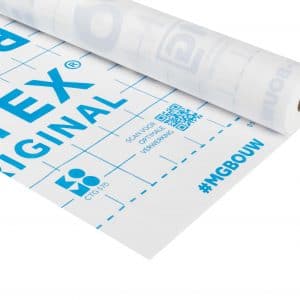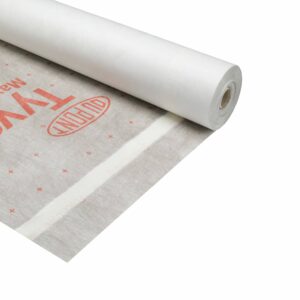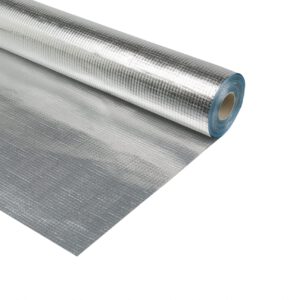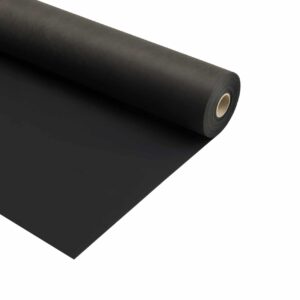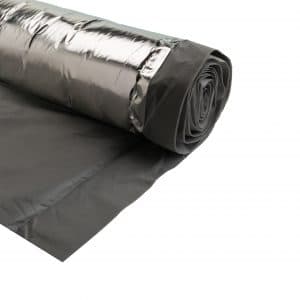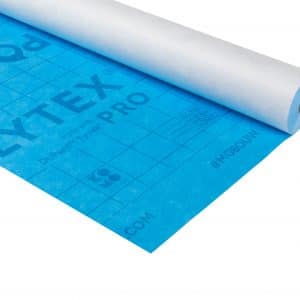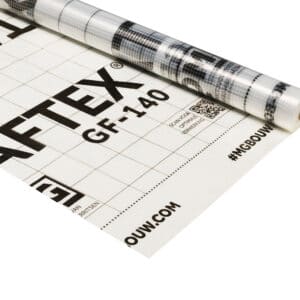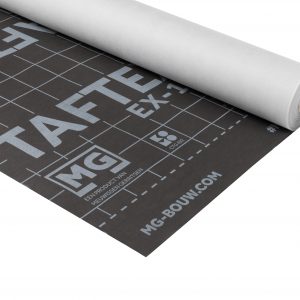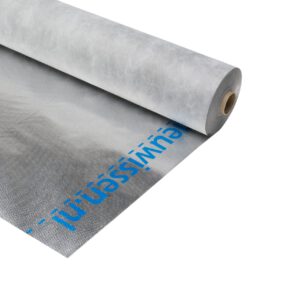What is a BREATHABLE
membrane?
A breathable membrane is able to allow moisture to pass through in the form of vapour while retaining water. If the insulation is not properly protected due to insufficient vapour barrier on the inside or during the open construction phase, the breathable membrane helps to dissipate the moisture without wetting the structure. Breathable membranes are applied behind the cladding or roofing on the cold side of facade and roof constructions.
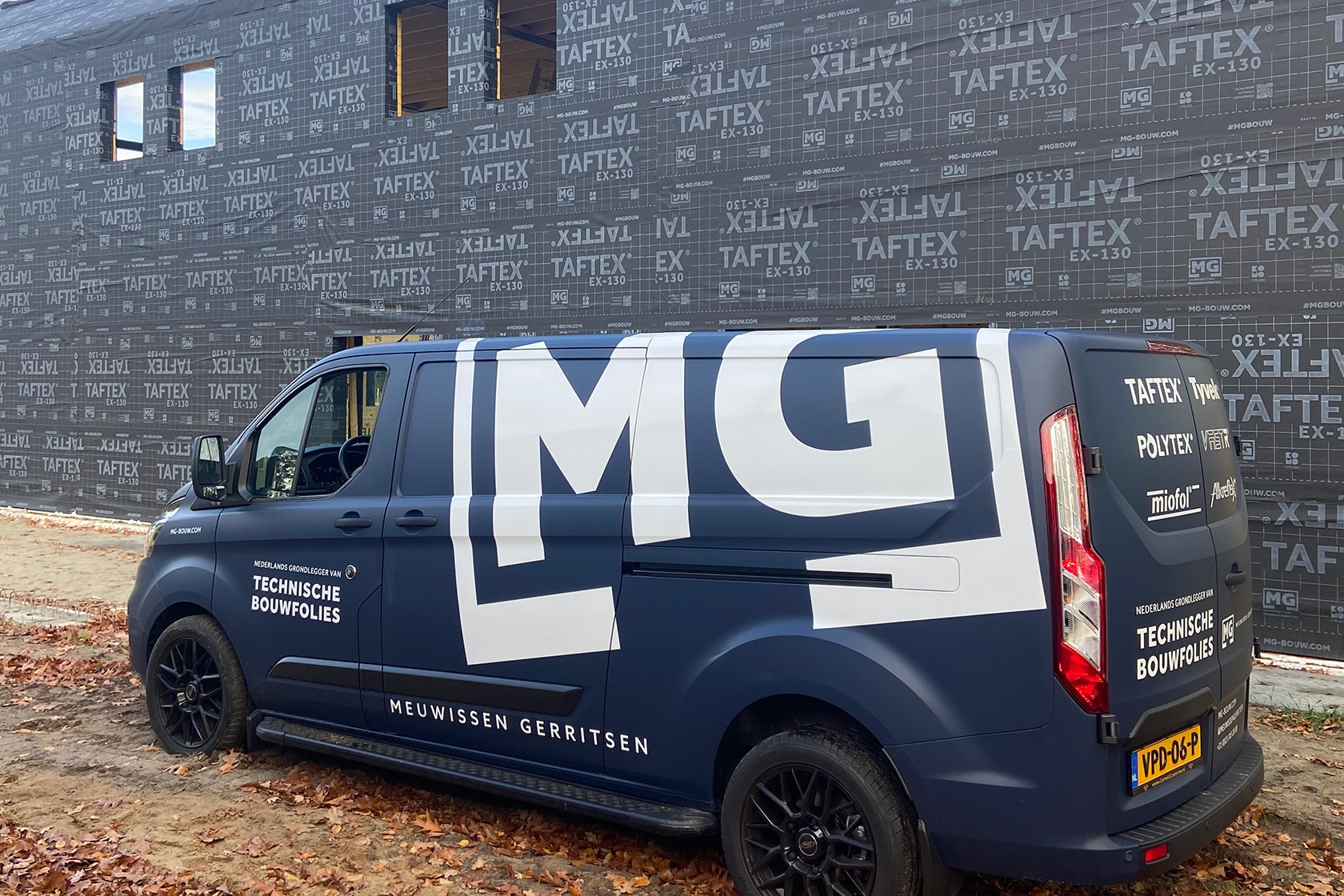
Why is
a Breathable membrane essential?
Breathable membranes are used on the cold side of the structure, usually behind the cladding or under the roof tiles.
A breathable membrane is an open membrane that allows vapour to pass through it. The membrane allows moisture
to “evaporate” from the inside to the outside. This creates a construction that is highly resistant to moisture problems. In this way you prevent mold growth, which in turn is good for your health.
Important in determining the right membrane is to look closely at the type of construction. Is it a roof or a facade and will the membrane be attached directly to the hard surface or rather to soft insulation? In addition, the final finish is
also important. For example, other membranes must be applied when the finish consists of poorly sealing tiles or a
zinc roof that faces high temperatures when the sun is on it.
Discover our Breathable membranes
The Polytex® Original is a waterproof breathable membrane composed of two layers of polypropylene with the functional microporous membrane in between.
Polytex® XTR is an extremely strong, four-layer roof and facade membrane. The waterproof, vapor-open membrane consists of two layers of polypropylene with a functional breathable microporous film and woven reinforcement in between for extra tear and tensile resistance.
Miofol® 125G is a reinforced technical facade membrane. Due to the strong UV stabilized reinforcement, Miofol® 125G maintains strength for an extremely long period of time.
Miofol® 200A1G is a breathable membrane for use in facades that is vapour permeable and non-combustible.
Polytex® Fassade ECO is an extremely UV resistant, breathable and waterproof membrane.
Miofol® 210AG is a micro perforated insulating reinforced technical building membrane.
Polytex® Fassade FR is a waterproof & breathable membrane used as protection behind a partially open exterior wall.
TAFTEX EX-210 Facade is a water-resistant and breathable membrane specially developed for use behind partially open facades.
TAFTEX GF-140 is a reinforced, water repellent and breathable membrane for use in facades structures.
Tyvek® FireCurb Housewrap is a waterproof, breathable flame-retardant facade membrane composed of a single layer of 100% HDPE.
Tyvek® UV Facade is a waterproof and extremely breathable and UV resistance membrane based on Tyvek® Dupont™ Technology.
TAFTEX® EX-130 is a waterproof breathable membrane composed of two layers of polypropylene with the functional microporous membrane between them.
Polytex® 145AG is a water-resistant breathable non-woven membrane provided with an aluminium facing.
this is why breathable membranes
are perforated
Non-woven or perforated membranes are mostly breathable membranes. Non-woven mebrane is a broad term because it indicates that the strong layer of the film is made of a non-woven or spunbond layer. A non-woven membrane often consists of multiple layers, one of which is a functional waterproofing layer. Non-woven membranes are thus completely waterproof but at the same
time allow vapour to pass through. Polytex® and TAFTEX® membranes are examples of non-woven membranes in our range.
So what is a perforated membrane?
A perforated membrane is an insulation membrane in which tiny holes are perforated across its surface. These holes are so small that a drop of water, when the foil is applied vertically in a facade, cannot get through. But at the same time, vapour can find its way out of the structure through the microperforation. There are many suppliers in the market who claim to sell perforated films but
there are many distinctions between the different producers. The size and quantity of the holes along with the depth at which they are perforated determines the effectiveness of the membrane.
When should you not use perforated membranes?
A perforated membrane such as our Miofol® products are particularly breathable and water-repellent, but not completely waterproof. The degree of waterproofing is indicated by W1 or W2. Non-woven membranes and the Tyvek® films are so-called W1 films and thus completely waterproof and suitable for roof and facade applications. A perforated film is water-resistant (W2) and therefore not completely waterproof. On the roof, the impact of rain is greater than in vertical processing in a facade. For this reason, we recommend using perforated foils primarily for facade insulation and not for roof insulation.
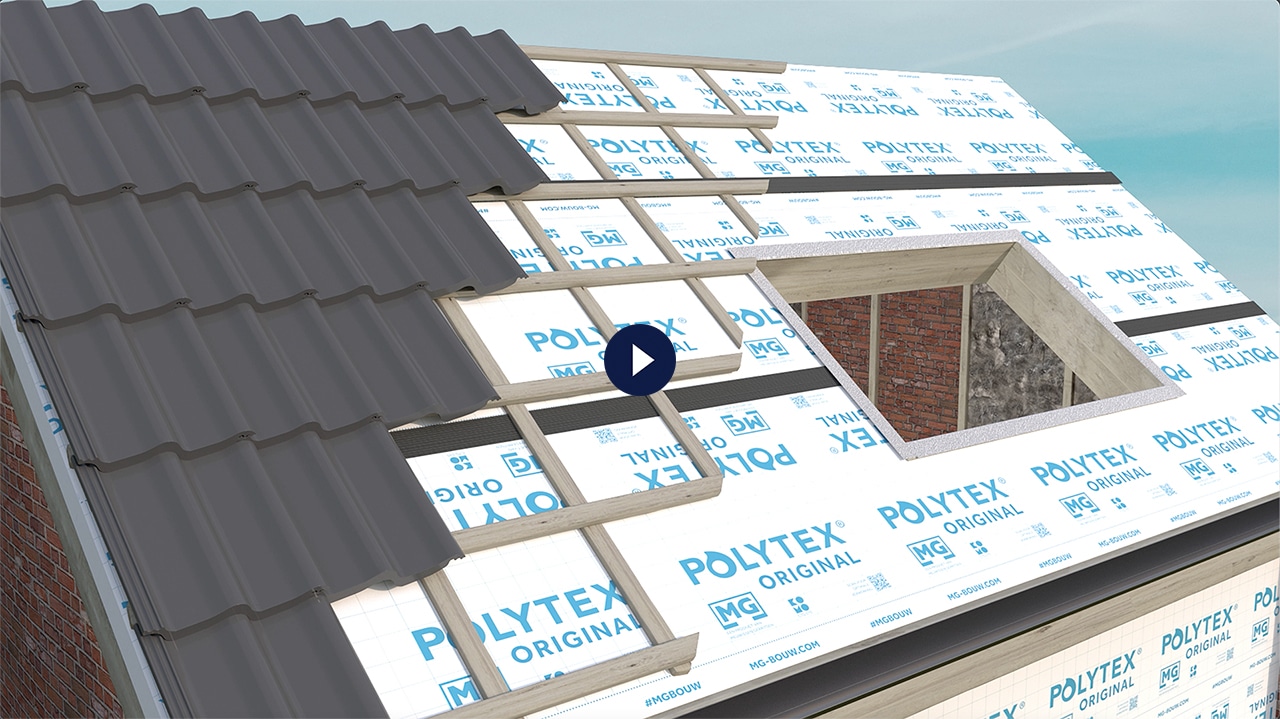
Instructional videos
This is how to process a vapor permeable membrane
Installation videos
This is how to install a breathable membrane
Only by properly applying a breathable membrane will you protect the structure from the outside. In our installation videos, we explain step by step how to best apply our products.

This is why a breathable membrane
is so important
To prevent moisture in the structure or insulation, it is crucial to be able to drain the moisture. For that, the breathable or vapour-permeable membrane on the cold side of the structure is used. Moisture can pass through the breathable membrane and is drained behind the cladding or under the roof tiles. A properly processed vapour control or vapour barrier membrane is there to stop moisture from entering as much as possible, while a breathable membrane ensures that the moisture is neatly drained to the outside. This ensures that the amount of moisture, function, but above all the life span of the structure and insulation is maintained.
A Polytex® non-woven membrane as a breathable and waterproof membrane on the cold side in combination with a Miofol® vapour control or vapour barrier membrane on the inside guarantee a functional and durable construction.
Is a Breathable membrane
waterproof?
In almost all cases, a breathable membrane is also water-repellent or waterproof with the aim of preventing water from outside from passing through. At the same time, breathable membrane allows moisture to evaporate from the structure to the outside. The choice which breathable membrane to buy depends entirely on your needs and the intended construction. Wondering which type of breathable membrane is best suited for your construction or do you have questions about the functioning? If so, feel free to contact one of our specialists for no-obligation advice.

Do I also need a vapour control membrane?
Structures can contain high levels of moisture. This can occur during construction because the wood or insulation material has been outside and got wet in the process but in most cases it is due to moisture from within the building. The warm air inside a building can hold more moisture than cold air outside. Because the moisture concentration inside in the form of vapour is higher than outside, vapour pressure is created. Or in other words, inside the building the vapour pressure is higher than outside. Due to the difference in vapour pressure, the vapour from inside is pushed out through the roof or wall structure. Therefore, it is essential to apply a good vapour control membrane such as the Miofol® 125S or a vapour barrier membrane such as the Miofol® 125AV to the warm side of the insulation.
But if the vapour control membrane or vapour barrier membrane is not properly applied or is damaged, vapour can still enter the insulation and construction. If the insulation or structure has become wet then it drastically affects the performance of the insulation. It also creates the possibility of mold or wood rot.

Buy your membrane at
our
dealers
Meuwissen Gerritsen specializes in the development and production of technical building membranes including vapour control membranes, breathable membranes, vapour barrier membranes and so much more. With membranes from our well-known A-brands, you are assured of the best quality membranes. With now over 1200 points of sale, you can find our products at building materials stores throughout the Benelux.
Frequently Asked
questions
What is a breahtabl membrane?
Breathable membrane is an insulation membrane used to create a vapour permeable layer in the building structure. The breathable membrane allows vapour from inside the structure to pass through to the outside, while at the same time preventing that moisture in the form of rain and snow from entering the structure from the outside.
What is a Breathable membrane used for?
Breathable membrane is primarily used in the construction industry as part of a building’s insulation layer. It is often used under the roof, in facades or in wooden structures to prevent moisture problems. A breathable membrane is always applied on the outside (cold side) of the structure.
How does a breathable membrane work?
A breathable membrane works by allowing vapour from the inside of the structure to pass through while preventing moisture from the outside from entering the building structure. The material is designed to allow vapour molecules to pass through while blocking water droplets.
When a breathable membrane is properly installed on the exterior of a structure, it allows vapour generated from the inside, such as moist air from breathing, cooking, showering, etc., to escape. This helps reduce condensation within the structure, which can lead to moisture problems and damage to insulation and wooden materials.
At the same time, a breathable membrane acts as a barrier against rainwater and moisture from outside. It prevents water from penetrating the structure, reducing the risk of damage from leaks and moisture problems.
Breathable membranes are designed to provide the right balance between allowing vapour to pass through and blocking liquid water. As a result, it can contribute to a healthy and sustainable indoor environment by preventing moisture problems and extending the life of the structure.
What are the benefits of vapor permeable membrane?
Breathable membranes offer several advantages. It allows vapour to pass through, which helps to ventilate moist air from the structure, preventing the formation of condensation. It contributes to a better indoor environment and helps reduce mold and rot problems. In addition, a breathable membrane can help save energy by improving the insulating capacity of the structure.
How long does Breathable membrane last?
The service life of a breathable membrane can vary depending on several factors, such as material quality, exposure to weather conditions and installation conditions. Generally, high-quality a breathable membrane is expected to have a life span of 20 to 30 years.
It is important to note that the actual service life of breathable membranes can be greatly affected by external factors. Exposure to extreme weather conditions, such as prolonged exposure to intense solar radiation, strong wind loads or heavy rainfall, can shorten the service life.
In addition, proper installation of the breathable membrane plays an essential role in maximizing its life span. Proper installation, with the membrane properly attached, overlapping seams sealed with the proper tape and the membrane not damaged during the construction process, can increase its durability.
It is advisable to follow the manufacturer’s installation guidelines and specifications and seek advice from professionals if necessary to ensure that the breahtable membrane is installed and maintained optimally, which can extend its life.
Is A Breathable membrane suitable for each type of construction?
Although a breathable membrane offers many advantages, it is not always suitable for all constructions. It is especially useful in wooden structures or buildings with cladding. For concrete or stone structures, the use of vapour control membrane may be more appropriate. It is advisable to consult a professional to choose the right building materials based on the specific requirements of the project.
Is a breathable membrane airtight?
vNo, a breathable membrane is not airtight. Unlike a vapour control membrane, which is designed to restrict the passage of both moisture and air, breathable membrane is designed to allow water vapour to pass through while simultaneously preventing rain and snow from entering the structure.
A breathable membrane has a certain degree of vapour permeability, allowing water vapour to escape from the inside to the outside. This helps regulate moisture and prevents the build-up of condensation within the building structure. This allows moisture generated by activities inside a building (such as breathing, cooking, showering) to drain outside.
Although a breathable membrane allows moisture control, it is not designed to stop air leaks. Achieving airtightness may require additional air sealing measures, such as the use of vapour control membranes and proper sealing of seams and penetrations.
It is important to understand that a breathable membrane and air sealing are two different aspects of a building structure. The proper use of both breathable membrane and vapour control membrane can contribute to optimal indoor climate and energy efficiency.
Can a Breathable membrane be recycled?
Yes, a breathable membrane can be recycled. It is important to follow the manufacturer’s instructions for proper recycling. Proper disposal of breathable membranes can reduce environmental impact.


